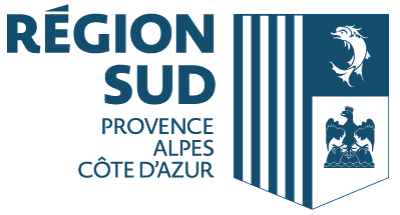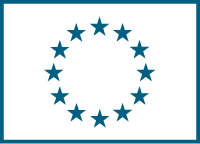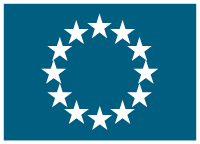Restoration of clear water lakes, mires and swamp forests of the Lake Stechlin
(Stechlinsee)
Date du début: 1 mars 2001,
Date de fin: 31 déc. 2005
PROJET
TERMINÉ
Background
The Stechlin, widely known thanks to Theodor Fontane's novel of 1899, is a crown jewel of Brandenburg's natural heritage. Since the 1950s, however, the dynamic and previously unaltered hydrology of the area has been exploited for short-term economic benefit, disturbing the complex relationships among the crystal-clear lakes, the bogs and woodlands.
Nutrient inflow, changes to the water regime (e.g. to provide cooling water for a nuclear reactor) and fish farming activities sparked fears that the lakes were in danger of losing their unique oligotrophic character. Past forestry practices, weirs and other barriers across streams and the area's popularity for tourism and recreation also had their impact.
Nevertheless, the Stechlin district is still one of the most important oligotrophic landscapes of Central Europe. Its wide variety of wetland habitats, intact forests and pellucid lakes are used as a habitat by many species listed in the Habitats and Birds Directives, including the lesser spotted eagle (Aquila pomarina), the bittern (Botaurus stellaris) and the hermit beetle (Osmoderma eremita).
An association to promote the Stechlin and the nearby Menzer Heide landscape, Naturlandschaft Stechlin und Menzer Heide e.V.', was set up by a number of interest groups in 1994. It sponsored basic scientific surveys and undertook efforts to have the site designated a protected area. These activities led to the LIFE project, which kicked off when the Stechlin became a nature park and Natura 2000 area.
Objectives
The LIFE project planned several restoration measures to correct the consequences of past interventions. Fens, bogs and mires would be re-humidified by revitalising watercourses and blocking ditches, or removing invading trees. Several streams would be re-opened to the migration of Annex II fish species by removing weirs. The water levels in several lakes would be raised by damming their outflows. Together with the forestry service, a management plan for the Annex I woodlands would be drawn up to allow forestry to continue in a manner that enhances, rather than threatens, the Natura 2000 values.
Management models would also be established for fish farming in the lakes, to reduce exotic fish stocks and allow the aquatic vegetation and water quality to recover. These would be implemented wherever possible through purchase or management agreements. Both management planning and many restoration measures would firstly require appropriate inventories to be developed (especially hydrological). Finally, the project planned to introduced a comprehensive visitor management scheme to promote the site's potential for sustainable tourism.
Results
After a duration of 58 months, this complex project concluded successfully. The project succeeded in achieving its main objective - the improvement of the hydrological balance and ecological status of the wider Stechlinsee area. This region is a large water-mire forest complex, and one of the projects main priorities was the conservation of the habitat type "Natural eutrophic lakes with Magnopotamion or Hydrocharition-type vegetation" (3150). The project managed the rewetting of bogs and fens by revitalising watercourses and blocking ditches, thereby raising the water levels on 833 ha. This was achieved by implementing the following actions:
⢠Closure of small mires ditches on a 17 ha area
⢠Removal of spruces on 105 ha bog area.
⢠Reduction of the diffuse loss of water in fenlands (around 95 ha) by filling small ditches and other measures.
Through these actions the mineralisation of peat was stopped on a large area and the flow of nutrients into the lakes was considerably reduced. Moreover, the increased total water volume had further positive effects on the water quality and, as a result, the public perception of the regionâs lakes.
In addition, the project purchased an area of 227 ha, including forests and grassland habitats and 5 lakes (Zechowsee, Köpernitzsee, Zeutensee, Kölpinsee and Peetschsee), which is now the property of the state of Brandenburg.
The project also removed invading shrubbery and trees on an area of 16 ha of drained fens, mires and wet grasslands, and designated a 670 ha total-reserve with pine-birch-bog woodland habitats. The actions boosted the development of bog woodlands and benefited threatened species (e.g. Osmoderma eremita). The project also implemented Management Plans for fens and meadows, and for forest and water resources.
Other project actions included the restoration of lake habitats for fish and the implementation of fishery management with the development of management models for fish farming, and the establishment of management contracts that were an important contribution to the improvement of the water quality in the Stechlinsee area. These results were achieved by implementing the following actions:
⢠Active removal of non-native fish species from Zeutensee, Köpernitzsee, Kleinem Glietzensee and Glabatzsee;
⢠Installation of an artificial breeding station, especially for the vendace (Coregonus albula), an indigenous species from the Stechlinsee. The offspring were reintroduced in the Peetschsee, Nemitzsee, Roofensee and Wittwesee lakes;
⢠Improvement of the water courses structure, including the aquatic threshold, at Döllnitz, Kleiner Rhin, Polzowkanal, Boberowgraben, Burower Hauptgraben.
Four barriers for fish migration were erected in the Polzowkanal (Menzer Mühle, Zernikower Mühle, Menz, 500m downstream of Menz), and a planned bypasses will allow free passage from the Havel via the Wentowsee to the Roofensee (especially useful for Cobitis taenia).
During the project period, a new fish species (Coregonus fontanae) was found and described in lake Stechlin. As a result of this discovery, the breeding station that is stocking the lake with vendace (Coregonus albula) is now only using allochthon stocking material from Stechlin in order to avoid a genetic modification of the indigenous species. In addition, the conditions for Lampetra planeri and spined loached (Cobitis taenia) were considerably improved through the construction of fish passes, improving their possibilities for spawning.
The results of all the actions are now included in a monitoring plan managed by the Naturwacht Brandenburg. Dissemination activities include the publication of a leaflet on the LIFE programme and Natura 2000 network, that gives information about the actions and aims of the project. A 15-minutes film was also produced in close cooperation with the regional TV station, and a 200-page book (for non-experts) about the area has been published. Also, the project implemented a visitorâs management plan that helped to reduce disturbance in sensitive areas, and to promote the sustainable tourism potential of the area through a comprehensive visitor management scheme.




